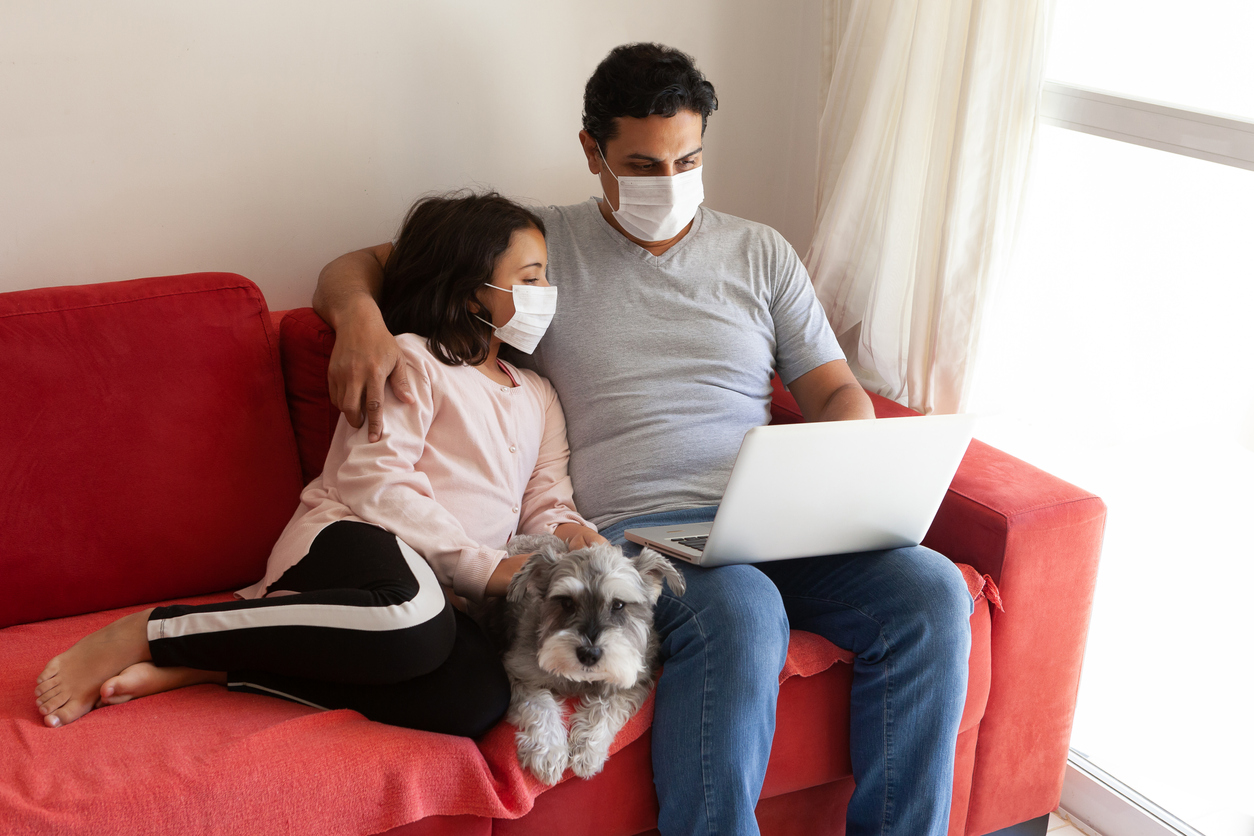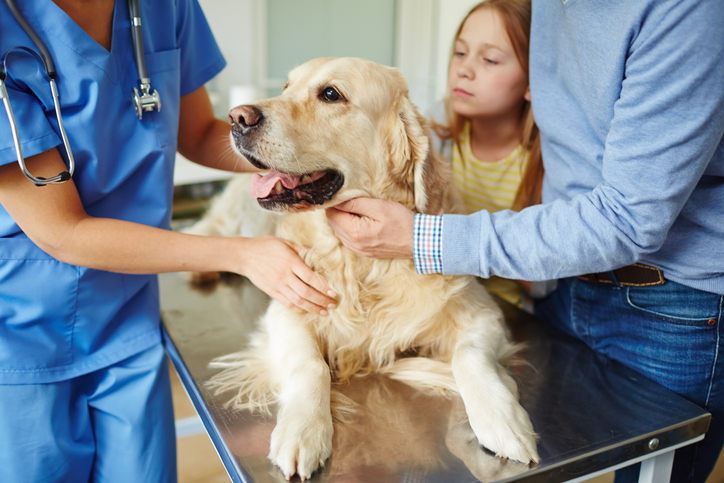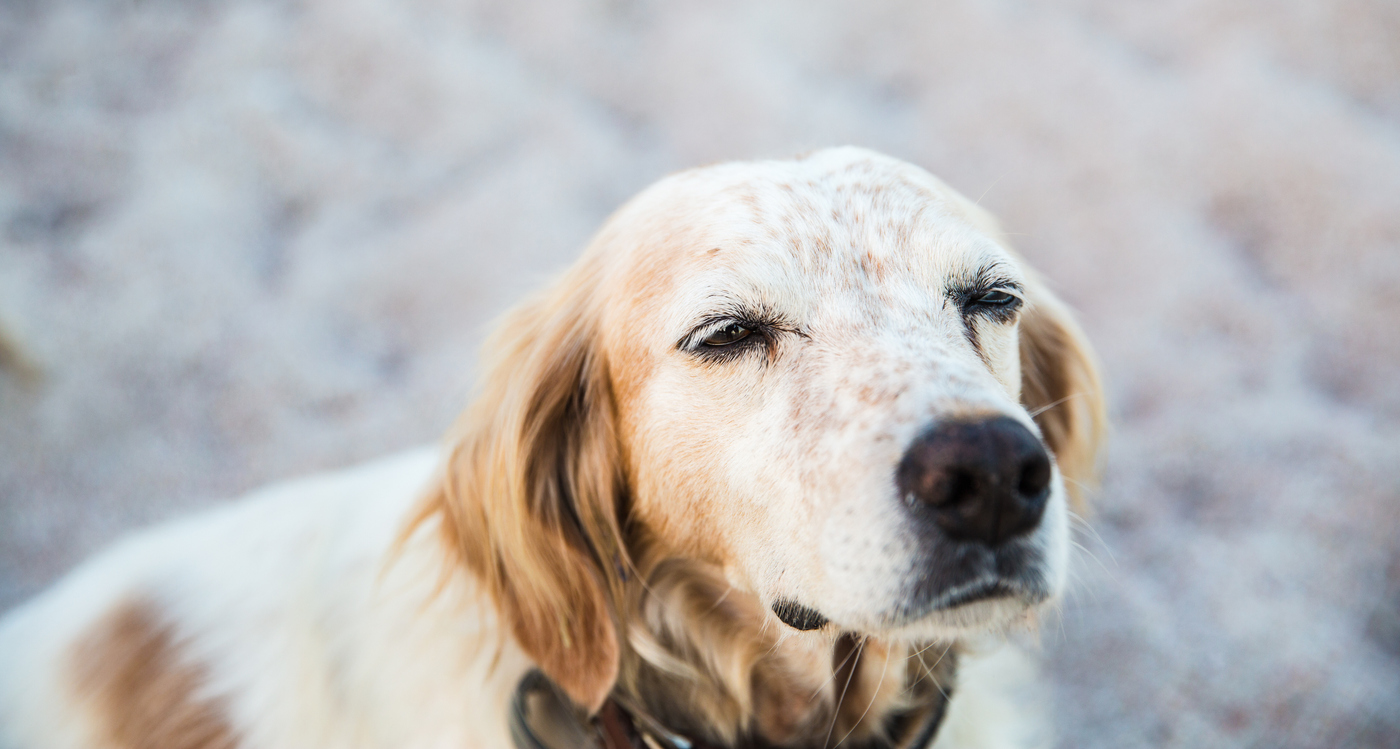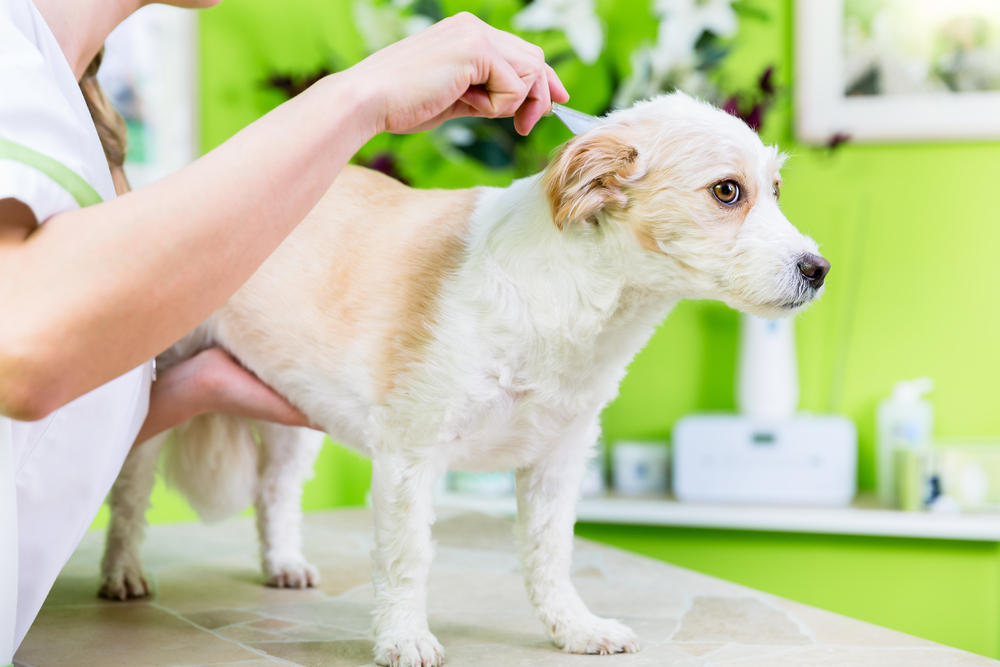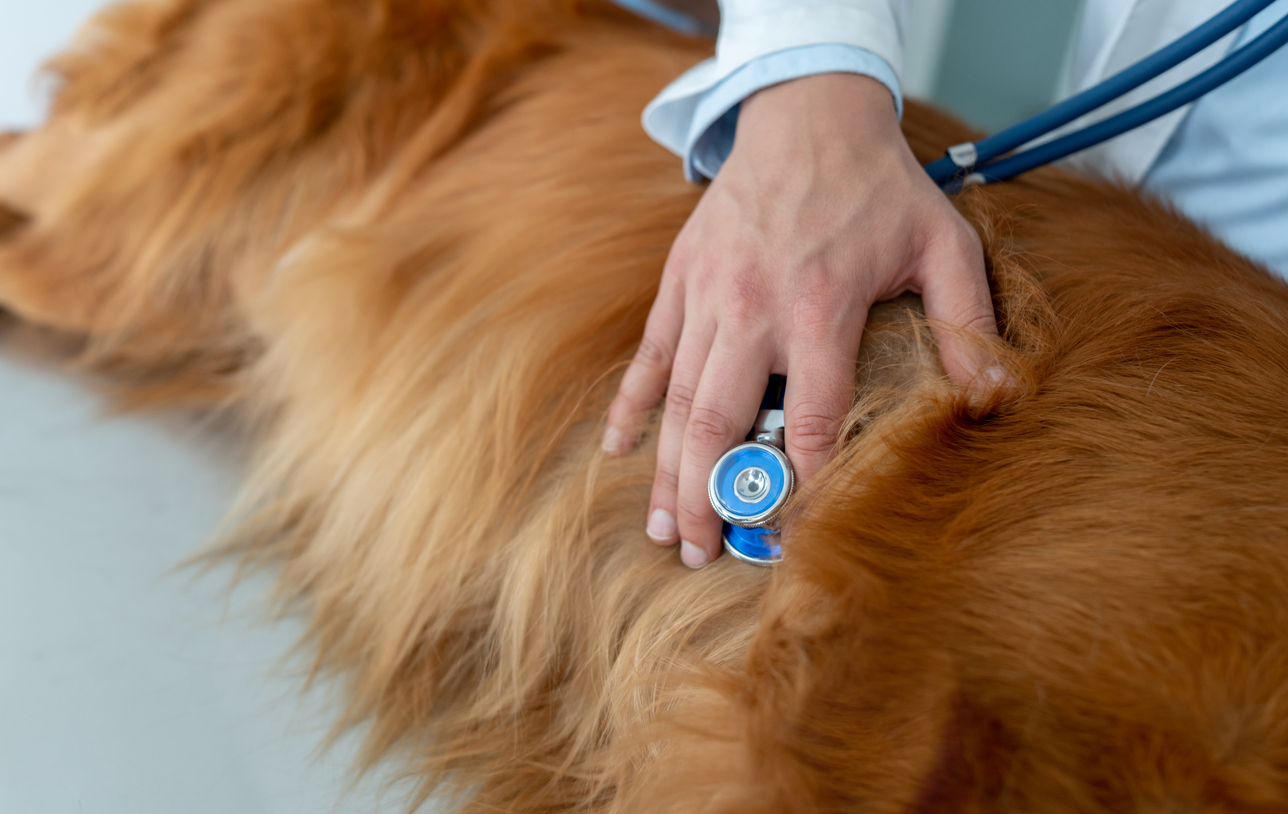Pet Parents and dogs alike love to enjoy the outdoors together, especially on a beautiful sunny day! Whether it is taking walks around the neighborhood, going for a drive in the car, or checking out a new hiking trail, getting out of the house is good for the physical and mental health of all involved. While veterinarians recommend enjoying these activities as often as possible with your pup, there are some hazards to be aware of and precautions to take while out and about in order to avoid dangerous health situations during warm weather conditions, like heat stroke.
There are no specific parameters or guidelines for appropriate temperature and humidity ranges for exercising dogs outdoors, simply because it is not a “one size fits all” situation. Some dogs that are anatomically predisposed to heat stroke in dogs include dog breeds with the smushed faces (Pugs, English Bulldogs, Boston Terriers, I’m talking about you!). These brachycephalic breeds (smush-faced) are extremely sensitive to heat due to their inability to pant efficiently, which is the main route that dogs use to dissipate body heat. These dogs can experience heat stress even on days that are not considered extremely warm or humid!
Other dogs with long noses and who are in excellent physical condition, and are also given ample water and rest breaks while exercising, can endure much more activity on warmer days. Knowing your dog’s limitations and ability to adapt to warm weather and watching for symptoms of heat stress and heat stroke, can not only ensure maximal enjoyment of the outdoors together, but it can also save your dog’s life!
Internal Body Temperature Regulation in Dogs
“Heat stress” (sometimes referred to as “Heat Exhaustion”), and its big brother “Heat Stroke” occurs when a dog cannot cool their internal body temperature down to a safe level that is healthy for its internal organs to function. When dogs are exercising or exposed to excessive heat, the thermoregulatory zone in their brain constantly senses their body temperature. As it begins to rise, the brain sends a signal to the dog to pant and dissipate that excess heat through evaporation in order to keep their temperature in a healthy range. Normal dogs maintain their temperature at 100.5-102.5℉. Hyperthermia occurs when the dog’s temperature rises over 103℉. If their internal temperature rises above 105℉, dogs will start to experience heat stroke. An internal core temperature of 107-109℉ will lead to organ failure and, unfortunately, is not compatible with life.
While exercising outdoors on warm days, or during times of extreme temperatures, pet parents should pay careful attention to their dog’s physical, mental, and behavioral signals to detect when the heat may be affecting them negatively.
Heat Stress/Exhaustion signs include excessive panting and drinking large amounts of water. At this stage, dogs will also appear to be restless or agitated.
Signs of Heat Stroke in Dogs
Heat exhaustion can lead to full-fledged heat stroke in dogs without the proper intervention, cooling, and rest. Dogs may exhibit the following signs that can indicate heat stroke:
- Uncontrolled panting even after the activity has stopped
- Restlessness and agitation, OR in more advanced stages, dogs can appear lethargic
- Heavy drooling with thick saliva, and also tacky, sticky gums if dehydrated
- Gums will appear anywhere from bright red to a blue/purple or appear to have bruising due to a lack of oxygenation
- Weakness, mental dullness
- Vomiting
- Diarrhea (possibly with blood)
- Racing, OR weak pulse
- Disorientation or seizures
- High rectal temperature (>105 degrees F)
First Aid Measures for Heat stroke in Dogs
Pet parents should remain calm but jump into action if they suspect their dog may be experiencing a heat injury. The sooner that cooling measures are taken and support is received, the better the outcome! Dogs showing clinical signs of heat stroke need to high-tail it to their veterinarian immediately for life-saving treatment!
Shade
Remove an overheated dog from any direct sun and keep them calm.
Cooling Measures
The most rapid method to cool an overheated dog is to apply cool or tepid water (or wet towels) to the neck, armpits, abdomen, and between their legs. Gentle application of water is recommended, as opposed to spraying with a hose, as all efforts to keep the dog calm should be taken. Replace towels frequently as they can retain heat if left in place.
AskVet Tip: Do not use ice water, ice baths, or apply ice to the skin of an overheated dog. This will cause the blood vessels in their skin to constrict, which will hold the heat in and inhibit cooling.
Offering Water and Drinking
Offer cool drinking water, but do not force a dog experiencing a heat injury to drink water. This is especially true for pups that are not in a mental state to be able to drink and swallow safely. You may be wondering how much water should my dog drink in an event of a heat stroke. Do not allow large breed deep-chested dogs to gulp too much water, as this can lead to Gastric Dilatation and Volvulus (GDV or “bloat”).
Airflow
Apply a fan to the affected dog for increased airflow or bring them into an air-conditioned building. If in the car, opening windows or turning on the A/C can also enhance cooling through evaporation.
Monitoring
If a standard digital thermometer and some water-based lube are handy, taking the dog’s temperature (via a rectal thermometer) and then rechecking it every 2-3 minutes is beneficial to assess cooling progress and gauge the level of danger that the dog may be in. If the temperature decreases to 103℉, discontinue active cooling measures so they do not fall below the normal core temperature range and become hypothermic. Continue to monitor the dog closely, and head to the veterinary clinic or emergency hospital for further evaluation and care. Having a pet savings account for instances like this can be a great idea to help cover costs.
Veterinary Care for Heat Stroke
Any dog showing clinical signs of heat stroke should be evaluated by a veterinarian immediately as it can result in severe organ and permanent damage and can be life-threatening. The earlier that supportive care is initiated, the better the recovery. Dogs can suffer from brain swelling, kidney failure, abnormal blood clotting, and bleeding. The veterinarian will perform a series of blood and urine tests to assess the situation, provide oxygen support, start intravenous (IV) fluids to correct electrolyte imbalances and dehydration in dogs, check blood pressure and cardiac function, and monitor the dog’s body temperature in order to avoid hypothermia. Heat stroke complications can linger for hours to days, and sometimes organ damage is permanent. Dogs that have suffered from heat stroke once are likely to be susceptible to having difficulties regulating their body temperature and are predisposed to experiencing heat stroke again in their lives.
Preventing Heatstroke in Dogs
If a dog has recovered from heat stroke, the long-term prognosis varies based on the individual dog and situation – how long the dog was struggling, the severity of the organ stress, cooling methods used, and level of emergency care received will all feed into the overall big picture. Preventing dangerous heat injuries in the first place is really the best way to go! Achieving safe and successful outings are possible with knowing your dog’s weather and exercise tolerances, predisposing factors for heat sensitivity, checking the weather for warm temperatures prior to outings, supplying cool drinks and adequate shaded rest during outside trips on warm days, paying attention to your dog’s physical signs, and never ever leave a dog in a parked car (even with the windows cracked). Pet parents educated about the dangers of heat injuries are much better prepared to make good choices and decisively respond to potentially dangerous situations resulting in more enjoyment of the outdoors and a healthier outcome!
Our AskVet Veterinarians are available to discuss all of your pet’s needs 24 hours a day, 7 days a week. Whether you have an immediate need or are looking to improve your pet’s overall wellbeing, just sign into your account and one of our friendly and knowledgeable veterinary experts will attend to your needs, no appointment required!
Written by:
Alexa Waltz, DVM
Dr. Waltz was raised near the beaches of Southern California but has spent her adult life living all over the beautiful United States while serving in the military and as a military spouse. She left California for the first time to pursue a career as a veterinarian at Louisiana State University School of Veterinary Medicine and graduated as a Doctor of Veterinary Medicine in 2006. She was accepted into the US Army Health Professionals Scholarship Program during vet school and upon graduation spent her military years as a veterinarian in San Diego working for the US Marine Corps and US Navy Military Working Dog programs as well as caring for pets of service members. After her military service, she became a civilian veterinarian and continued as a small animal general practitioner at clinics in California, Rhode Island, Colorado, and Maryland. Dr Waltz loves to see her “in person” patients just as much as communicating with and assisting pet parents virtually on AskVet. Dr Waltz is also a Mom to 3 humans, 2 guinea pigs, and 1 Australian Shepherd and in her spare time she loves traveling, adventures, exercising, and doing just about anything out in nature!






